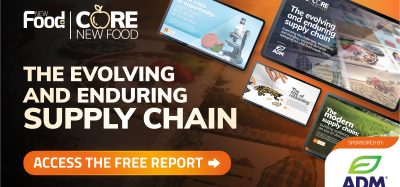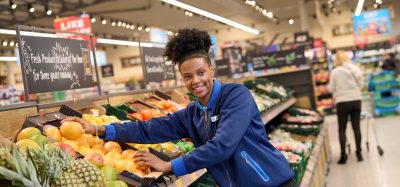Risk assessing new suppliers in the COVID-19 era
- Like
- Digg
- Del
- Tumblr
- VKontakte
- Buffer
- Love This
- Odnoklassniki
- Meneame
- Blogger
- Amazon
- Yahoo Mail
- Gmail
- AOL
- Newsvine
- HackerNews
- Evernote
- MySpace
- Mail.ru
- Viadeo
- Line
- Comments
- Yummly
- SMS
- Viber
- Telegram
- Subscribe
- Skype
- Facebook Messenger
- Kakao
- LiveJournal
- Yammer
- Edgar
- Fintel
- Mix
- Instapaper
- Copy Link
Posted: 4 September 2020 | Barbara Hirst, Marta Ahijado | No comments yet
Barbara Hirst, Food Safety and Quality Consultant, and Marta Ahijado, Head of Food R&D at RSSL, discuss how risk assessment strategies are being reshaped by the pandemic and why analytical testing is more important than ever.


COVID-19 has disrupted the supply chain on an unprecedented scale. As a consequence, many food manufacturers have been compelled to urgently set up new supplier arrangements, either due to shortages of commodities or the need to upscale volumes of core lines. Best practice dictates that any change to the source or profile of commodities coming into the manufacturing environment must be fully risk assessed, but the way in which this essential process is carried out has also been affected by the pandemic.
Under normal circumstances, a potential new supplier would not only be put through a full quality assurance assessment, they would also almost certainly be subject to an on-site audit. Given current restrictions, however, this practical contact is somewhat difficult.
Manufacturers are instead carrying out these checks remotely and increasingly relying on paperwork alone to provide the vital information needed for risk analysis – not an ideal scenario. The lack of direct contact makes it harder to build trust in a supplier, which could mean manufacturers are less likely to have complete confidence in the new relationship. There are also issues with opting to go through an agent or broker. While this approach may appear to solve the immediate supply issue, introducing a third-party into the mix is likely to complicate traceability.
In many ways, the pandemic is introducing greater uncertainty for manufacturers and retailers, who are already dealing with dramatic shifts in consumer purchasing and consumption patterns. Labour shortages are limiting harvesting and processing capacity for many suppliers, while border restrictions continue to hamper transportation to manufacturing sites.
Yet, it is important to remember that even in this unpredictable context, the underlying principles regarding food safety and food quality remain the same. The challenge for the industry is how to accurately assess and mitigate the risk factors associated with selecting new suppliers, while also navigating the challenges imposed by COVID-19.
From a distance
First and foremost, manufacturers need to re-think the conventional quality supplier assurance process. If a physical audit is not possible, what is the best alternative? Equally, asking the right questions in a way that will elicit the required response is vital. Then think about how you can interpret that information to build an accurate picture.
When it comes to allergens, for example, you need to be sure that you have accurate information for all of the allergens that need to be declared intentionally. You also need to ensure you have covered off all routes for potential contamination that could result in unintentional presence of allergens. It is not enough to ask general questions; you need to drill down to fully establish the level of risk and what controls are in place to minimise it. After all, the unintentional presence of allergens in a free-from product would not only be in breach of the regulations, it would be incredibly dangerous to an allergic consumer, and could potentially result in significant damage to your brand reputation.
Ensuring product quality is maintained is also a vital part of this process. Making sure you fully understand the functionality of newly sourced ingredients will help to avoid any unwanted variations in terms of the end product’s taste, texture or visual appearance – all of which could possibly compromise consumer preference and damage market share.
Much of this can be established without physically visiting the supplier’s facilities, but there are still likely to be concerns around specific issues which require further investigation. This is when analytical testing can provide invaluable evidence and, crucially, as a remote, laboratory-based activity, it can be carried out regardless of any restrictions relating to COVID-19. Based on this additional data, producers can then either decide to move forward with confidence or look elsewhere.
Testing times
Profiling is often a useful starting point for any form of validation testing. It can be used to check origin and authenticity – something which is particularly relevant for oils which are often subject to adulteration.
Authenticating meat and fish is also a highly valuable asset in risk assessment. According to the Food Authenticity Network, meat and meat products have shown a dramatic 388 percent increase in food fraud since the COVID-19 outbreak, so producers would be well advised to take every precaution.
At RSSL, for example, we provide semi‑quantitative and qualitative DNA testing for 20 species of meat and 50 species of fish. For producers of animal-based products, this service helps to guard against the damaging legal and reputational consequences of undeclared animal species, but it also has benefits for meat-free products.
This type of DNA-based testing is not only relevant for manufacturers of vegetarian products for ensuring cross contamination has not taken place before the ingredient arrives at the factory, it is also increasingly important for vegan alternatives. Clearly there are ethical implications involved when making vegan claims, but consumer safety is also a consideration. This is because evidence suggests that some consumers who are allergic to milk and eggs assume that a product positioned as vegan does not contain any animal derived products. Extending the validation testing parameters to include traces of egg and milk protein will help to substantiate vegan claims.
There are also practical and commercial advantages in carrying out certain types of testing on the composition of ingredients. Physical characterisation, for example, can alert producers to any potential manufacturing issues which could prove costly further down the line. Switching sugar suppliers, for example, may mean the new ingredient has a different particle size; a distinction which could lead to blockages in the manufacturing process or create an undesirable texture in the end product.
That is why we always recommend that a thorough risk assessment is proactively carried out before committing to any change in supplier. This approach will save a great deal of time, effort and resource. Otherwise, these issues may only come to light after production has started and prove costly.
That is not to say, they cannot be rectified if things do not go to plan. If a manufacturer does decide to buy from another supplier and runs into problems, a series of targeted analytical testing methods can be used to provide answers and establish why the end product no longer meets expectations.
An agile approach
The turbulent events of the last six months have undoubtedly challenged and tested the food supply chain in a way few could have predicted. It has changed the way the industry operates and how businesses interact, but it has also led to new and innovative approaches – some of which may remain in place long after lockdown measures have eased.
As the world braces for a possible second wave of COVID-19 and there is the potential for more localised lockdowns, having effective systems in place to keep operations running smoothly and safely will be essential for some time yet. Particularly as there is evidence that the pandemic may be creating more opportunities for food fraud.
For many manufacturers, extending supplier networks and establishing new relationships is likely to become a more regular occurrence, but it will demand a new level of agility. In this scenario, working with trusted partners to provide additional guidance and analytical data to accurately assess the risks will be key for those seeking to remain resilient in an uncertain world.
About the authors












